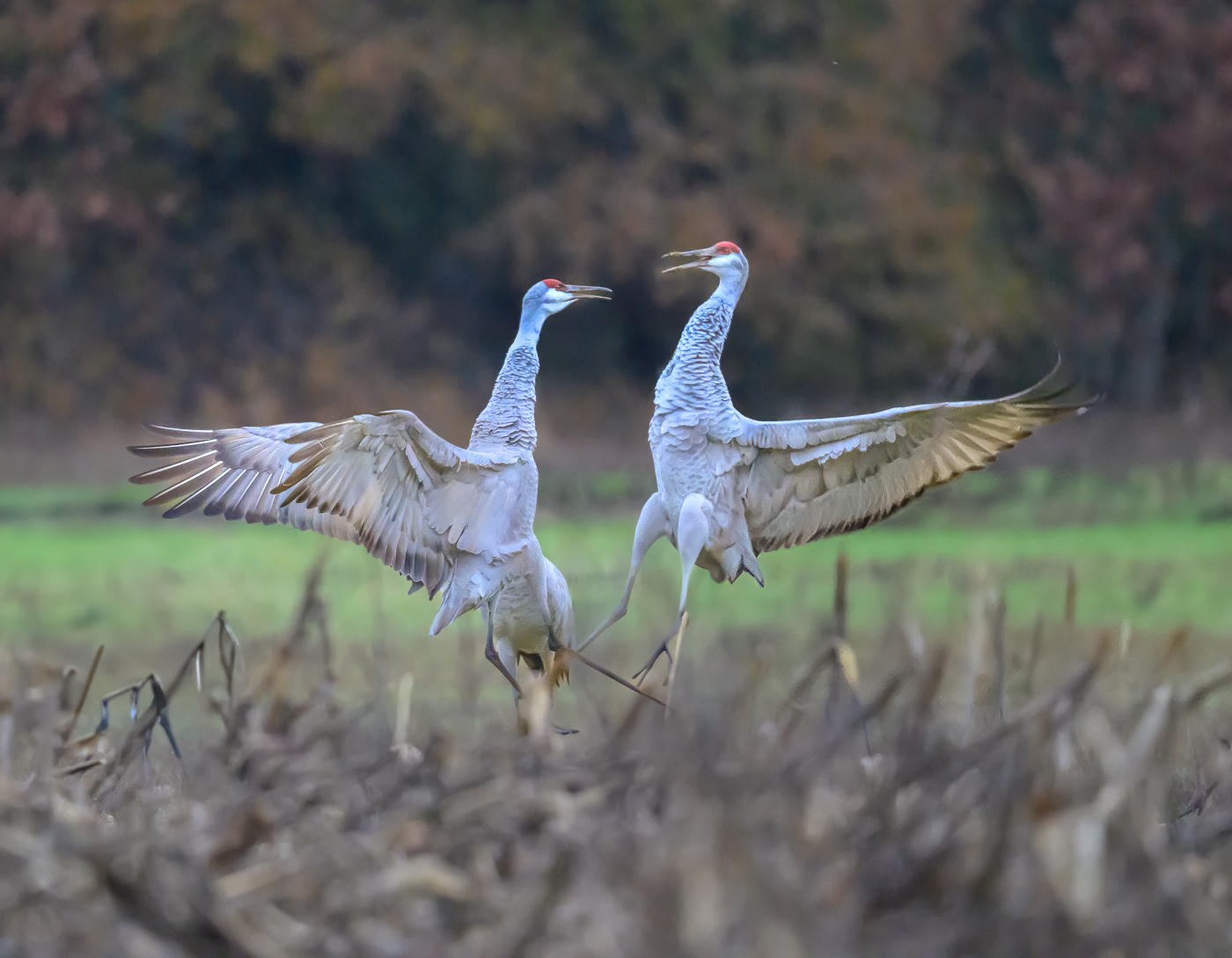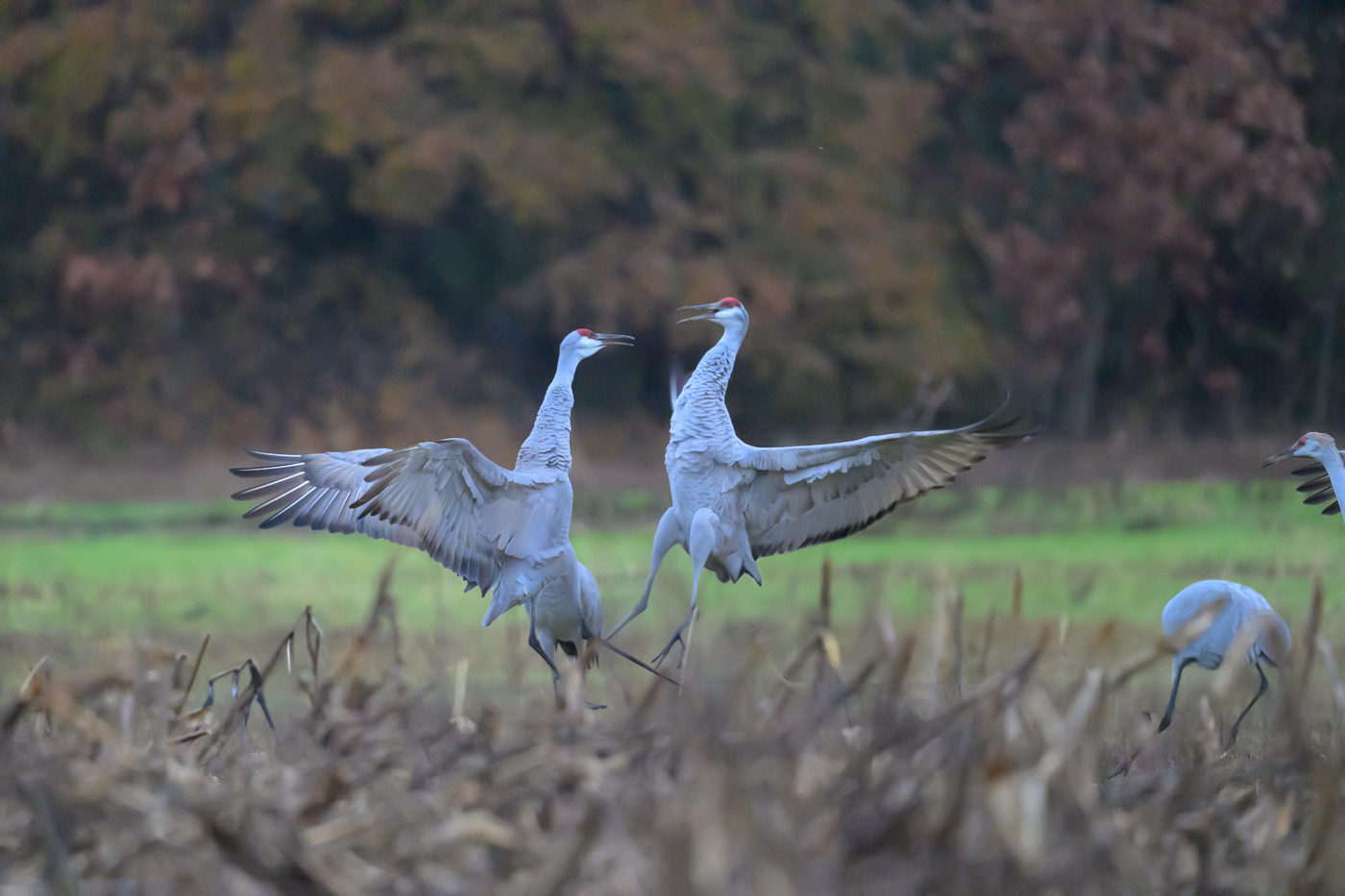Michael Weatherford
About the Image(s)
I visited Wheeler National Wildlife Refuge near Decatur Alabama in December mainly to view the sandhill cranes. They arrive in December and stay there until mid February. There were about 15,000 of them on the refuge while I was there. Their raucous cackling filled the air. It was dark and rainy - not that good for photography. I wanted to get some bird interaction shots and this is my best one. I used my Nikon Z8 with the Z 600mm f6.3 lens, hand held. An f4 lens would have been better considering the conditions but there was one big obstacle - I don't have one. The 600 lens at only three pounds is easily hand-holdable but I'm wondering if I might have gotten a sharper image with a tripod. I shot at 1/640 which was as low as I thought I could go and freeze the action. With lens wide open at f6.3, that left me with an ISO of 20,000. I was surprised that I got an image I could work with. I know the image is not too sharp but wondering if there's anything else I could have done. Processed in Lightroom and Topaz Photo AI. I did (for me) a minor crop and increased clarity and sharpness in LR even after running it through Topaz. I'm including the original image.
This round’s discussion is now closed!
5 comments posted
(Groups 59 & 72 & 91)
Many years ago, when I was young and had hair,I went to a bird photography workshop run by Moose Peterson who was a Nikon Ambassador of Light. I swore by two things when shooting birds. The first was shutter speed, the faster the better and the second was TRIPOD use. I remember him showing how to carry a tripod in the field, how to pad it so it did not hurt your shoulder and how to quickly break it down from full height to flat on the ground. He never used a tripod with a center column. I have lived by his words ever since. I use a tripod for shooting birds 99.9% of the time. My photo this month is an example of tripod use. In my opinion 1/640 is too slow for birds on the wing but I know sometimes it is necessary that is where the tripod really pays off. that extra bit of steadiness really helps. Matched with a gimbal head the results speak for themselves. To support what Bruce says I generally use a single focus point to avoid the camera trying to focus on unwanted subjects like corn or branches. My lens (it is a f4 and is sharp even wide open) has a switch that allows me to select focus range. One setting is from minimum focus distance to infinity and the other from a mid distance to infinity. Using the second setting allows the lens to focus faster when shooting at distance, We are only talking fractions of a second but een that matters. And in low light it really helps to prevent lens hunting. You might check to see if your lens has such a setting. My lens also has 2 buttons on the barrel which I can use for preset distances. For example. If I'm shooting a bird in flight that is at distance and it is going to return to a nest I can set one of the buttons when I focus on the nest. Then I can track or chase the bird around the sky and when it heads for the nest, just touch the button and the lens will focus immediately at the distance of the next, even if the camera is not pointing at the nest. By the time I swing the camera to the nest my focus is set and I always get a perfect sharp shot of the landing on the nest. Of course you have to be standing at the original position and can't be walking around. Posted: 01/05/2025 08:21:12
I won't repeat the great advice that Larry provided. Yes, a faster shutter speed and a tripod are a must! So, let me focus on what concerned me about this image. You have 3 birds. The left one covers most of the bird behind it, but not completely. So, you have the problem of one object merging with another. You could try to clone out the back bird, but that would be hard, or you could crop the image from the bottom, so that it focuses our attention oon the wings and the heads of the birds. You might try to run the image through topaz sharpen? Posted: 01/07/2025 14:17:38
I'm also using a Z8 with the 600mm f/6.3 lens so I'm going to make input based on my experience with that setup. It does incredibly well with focus in good light, but I've found it struggles to acquire focus quickly when the light level is low. I have a much lower "keeper" rate in these conditions. My "solution" is to shoot in bursts and keep shooting as long as I have the subject, just going for percentages!
I am using 3D tracking AF mode, with bird detect selected, as my primary AF for birds. When it fails to work (meaning find and stay on the bird), I switch to a single point mode.
I'm going to be contrary here, I'm hand holding this setup with very good results even at fairly slow shutter speeds. The stabilizing technology is incredible. I'm not sure a tripod would've really made a difference here because I think it's the speed of focus acquisition that's the problem. My 2 cents....
Posted: 01/07/2025 18:51:22

